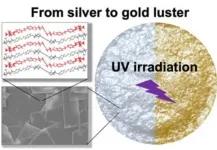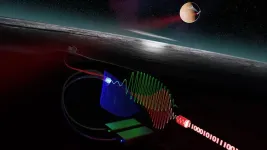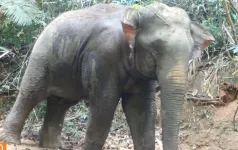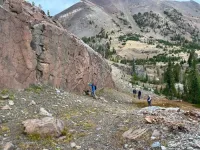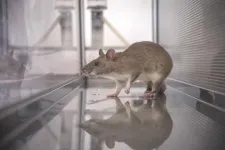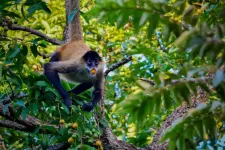As a leader in academic health and biomedical research training, the Texas Tech University Health Sciences Center (TTUHSC) covers the West Texas region that comprises half of the state’s land mass and is home to 10% of its population. Research at TTUHSC drives innovation and discovery, changing the lives of those it serves and attracting talented faculty, staff and students.
During the latest reporting period (2020-2022), TTUHSC received an average of $12,539,679 annually in National Institutes of Health (NIH) funding. In an effort to grow research excellence at TTUHSC, a project team led by Lance McMahon, Ph.D., senior vice president for research and innovation, recently received a three-year, $1.16 million grant to conduct a capacity-building study.
Other members of the team include Min Kang, Pharm.D., Christine Garner, Ph.D., R.D., and Leslie Shen, Ph.D., from the TTUHSC School of Medicine; Phil Sizer Jr., P.T., Ph.D., Troy Hooper, P.T., Ph.D., and Julie St. John, Dr.P.H., from the TTUHSC School of Health Professions; Mike Blanton, Ph.D., from the TTUHSC Graduate School of Biomedical Sciences; Ulrich Bickle, M.D., from the TTUHSC Jerry H. Hodge School of Pharmacy; and Alyce Ashcraft, Ph.D., R.N., from the TTUHSC School of Nursing.
“This is what is called a cooperative agreement,” McMahon said. “We are going to interact with program staff at the NIH; these are the people who help establish the research priorities of the different NIH institutes. They're plugged in, so they can give us feedback, and we can help describe to them who we are, what we do and what our strengths and weaknesses are.”
McMahon said five other universities also received funding from the NIH to take on the same project at their schools. The TTUHSC team will interact with and conduct peer comparisons to compare best practices with the other universities who were funded.
Broadly defined, the grant is for building research capacity. TTUHSC has been well known for basic laboratory research, but McMahon said the university is beginning to create a vision that is committed to developing, expanding and strengthening clinical and community-based research. He said that’s important because there are substantial health disparities in the region created by rural locations and geographical distances from urban centers.
“Health care is clustered in major metropolitan areas in our region: Albuquerque, Oklahoma City, Dallas, Austin, San Antonio and even Houston,” McMahon said. “We have health disparities that are a great concern for our communities, and as an academic health center, it is our responsibility to help understand and address the health disparities of our region. That's what this grant will help us accomplish.”
The project will begin with a needs assessment that will incorporate preliminary data and optimize the tools and instruments required to gather new information. McMahon said the project team will use risk assessments, SWOT (Strengths, Weaknesses, Opportunities, Threats) analyses and evidence-based tools developed in research studies and by leading organizations such as the National Council for University Research Administrators. The needs assessment also will include interacting with the university community, then using that community input to help define what the research needs are and to identify solutions.
“That's community-based participatory research, and the NIH is becoming increasingly interested and committed to bringing more immediate outcomes and value to the community because early-stage basic science research takes years of development before the discovery makes it to the market,” McMahon explained. “The NIH wants to interact directly with the community and come up with more immediate strategies to address health disparities related to nutrition, diabetes, mental health and aging. If there's a need, we are in a position to help address that need by engaging our community in the research process.”
Following the needs assessment, the project team will create an action plan aligned with TTUHSC’s values-based culture, and then execute the plan through the university’s governance structure. McMahon said the plan will be refined through an iterative process of evaluation and adjustment. During this process, the investigative team will focus on organizational effectiveness through vertical integration between the Office of Research and Innovation and the associate deans for research at each of the university’s six schools, and horizontal integration between university-level support units such as the academic affairs, finance, compliance and information technology offices.
“Our strategic translational research themes of cancer, brain health, cardiometabolic and infectious disease will guide this process,” McMahon stressed. “Regular meetings through our university governance structure will include five councils — research, academic, clinical, people operations and external affairs — that will facilitate the achievement of milestones.”
After developing the action plan, the team will work to strengthen the alignment between the investigative team and the university’s steering committee. With clear and frequent communication between the investigative team and steering committee and implementation and refinement of the action plan in concert with the TTUHSC governance structure, McMahon expects to expand TTUHSC’s research capacity and productivity, which he believes could translate into increased extramural funding that leads to a sustained doubling of the university’s NIH funding to more than $25 million.
“This is a capacity-building project that will grow research excellence at our university,” McMahon said. “It’s a good thing for the university and I'm confident that we will increase our NIH funding in the next two to three years. We have opportunities — golden opportunities —that lie before us and that we are working to identify and develop. We're taking discrete steps to increase the funding so we’re not just hoping we’ll get more. That way we can recruit more faculty and also help the current faculty. That's all part of what this grant will help us accomplish.”
###
END


